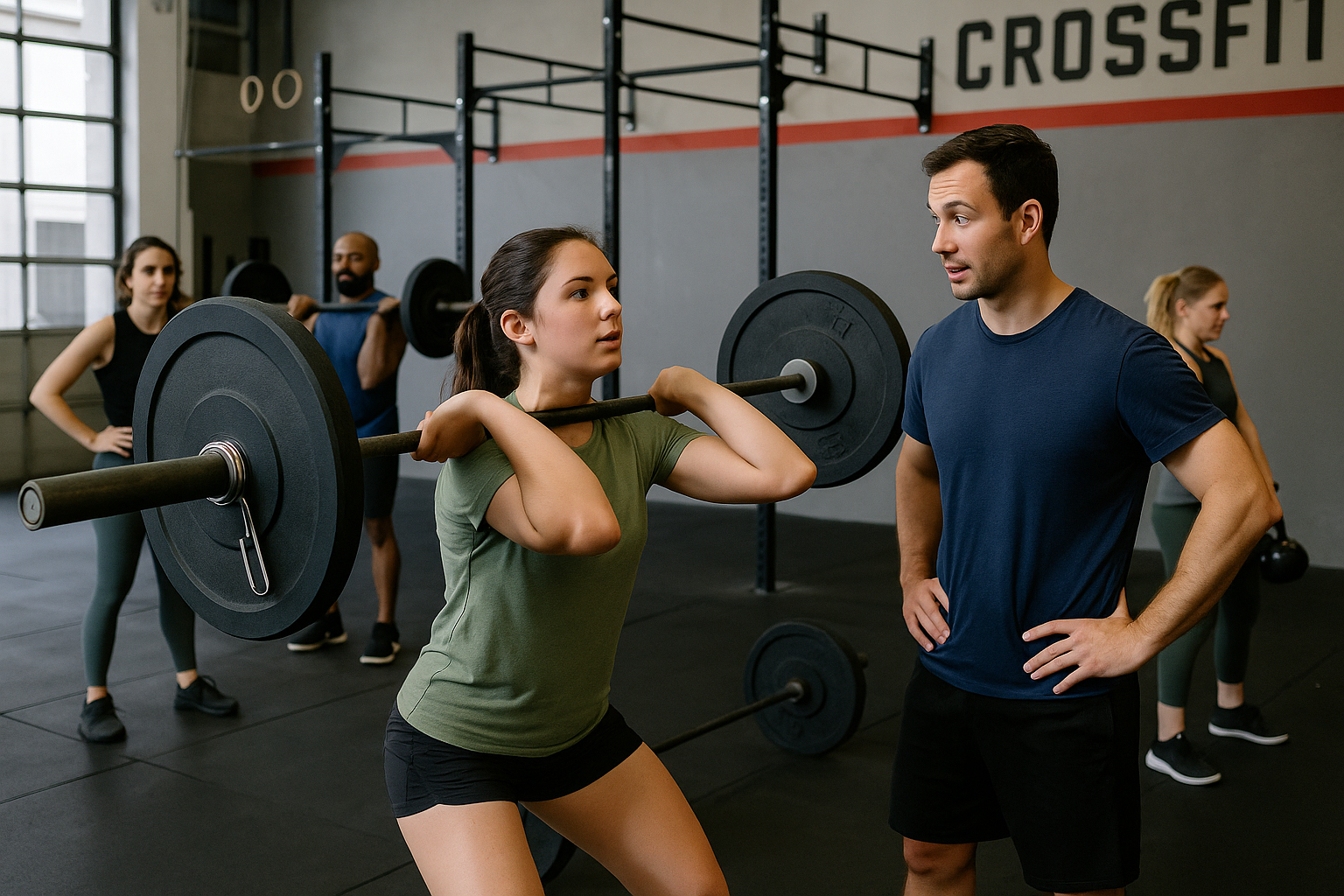William Baier, MS, CSCS, USAW, CFL2
•
October 9, 2025
Beginner’s Guide to CrossFit: Your First Month
The start of any journey is the hardest part—but also the most rewarding.
CrossFit can look intimidating from the outside, but at its core, it’s simple: constantly varied, functional movements performed at manageable intensity.
It blends strength, conditioning, and skill work to build total-body fitness that carries into real life.
For beginners, it’s one of the most supportive and effective ways to get stronger, fitter, and more confident.
Why CrossFit Works for Beginners
CrossFit isn’t just for elite athletes. It’s designed for everyone.
Three big advantages make it beginner-friendly:
- Scalability: Every workout can be modified to match your ability level.
- Coaching: Certified coaches guide your technique, pacing, and progress.
- Community: Training with others keeps you accountable and motivated.
It’s not about doing more—it’s about doing better, one workout at a time.
Your First Month: What to Expect
Most CrossFit gyms (or “boxes”) follow a consistent class structure:
- Warm-Up: Light cardio and mobility drills to prep your body
- Skill/Strength Work: Focused time to practice a lift or movement
- WOD (Workout of the Day): The main conditioning piece—anywhere from 5 to 20 minutes
- Cool-Down: Stretching and recovery work to finish strong
Weeks 1–2: Learn the Basics
- Focus on fundamental movements: squats, deadlifts, presses, push-ups, pull-ups, rows
- Keep weights light and intensity moderate (around 60–70%)
- Follow the CrossFit mantra: mechanics → consistency → intensity
This phase is about movement quality—not max effort.
Weeks 3–4: Build Confidence
- Gradually increase load or movement complexity
- Begin tracking your results—progress builds motivation
- Try benchmark workouts (like “Cindy” or “Baseline”) at appropriately scaled levels
Your goal is consistency, not competition.
Safety and Injury Prevention
Research shows CrossFit’s injury rate is comparable to weightlifting and recreational sports—when athletes are coached and progress sensibly.
Beginner Safety Checklist:
- Ask questions—your coach is there to help
- Stop before your form breaks down
- Prioritize sleep, hydration, and recovery
- Know the difference between soreness and pain
Injury prevention is built on patience and good mechanics.
Beginner Mindset Tips
- Be patient. Fitness progress compounds over time.
- Avoid comparison. Everyone starts somewhere.
- Stay consistent. Three classes per week is enough to build habit and skill.
- Engage with the community. Introduce yourself, cheer others on, and enjoy the process.
CrossFit is about effort and connection—not perfection.
Sample Beginner Week
- Monday: Squat strength + short AMRAP
- Wednesday: Pressing strength + EMOM
- Friday: Deadlift + interval conditioning
- Optional Saturday: Partner or team workout
You’ll quickly find a rhythm that challenges you while leaving room to recover.
Start Your First Month with Confidence
Your first month in CrossFit isn’t about hitting personal records—it’s about learning movement patterns, building consistency, and finding your groove.
With proper coaching, steady progress, and an open mindset, you’ll surprise yourself with how capable you already are.
The hardest part is walking through the door. The rest is showing up.

